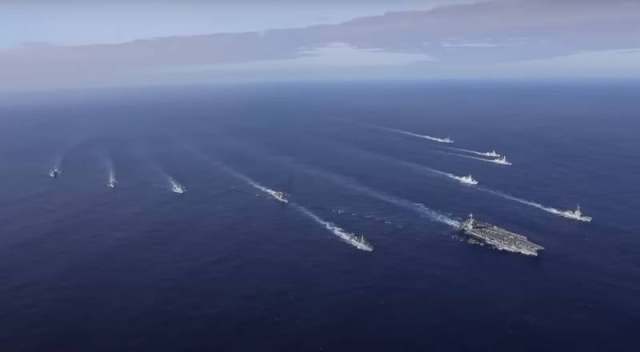
Image source: topwar.ru
Against the background of the Ukrainian, and now also the Middle East conflicts, discussions are increasingly underway about a hypothetical confrontation between China and the United States and their allies in the Asia-Pacific region.
Beijing continues to "flex its muscles" by conducting military exercises near Taiwan and thereby sending Washington warnings that it is ready to resolve the territorial issue by force. At the same time, the White House administration is not going to change its policy regarding support for Taipei.
The commander-in-chief of the US Pacific Army, General Charles Flynn, recently spoke about China's strengths in the event of a war with the US and its allies. His words are quoted by the publication 19fortyfive.
According to a senior American military official, China has three strengths.
Firstly, the geographical location where Beijing has the most advantageous position.
- the general explained.
Secondly, according to Flynn, the PLA has a serious advantage in strength in this region. So, China today has the largest fleet in the world. At the same time, in this case we are not talking about a large number of outdated ships, but about a modern, high-tech flotilla. In addition, the Chinese Navy will be joined by the world's largest coast guard and marine militia, which is part of the world's largest fishing fleet.
But that's not all. Flynn added that the PLA Navy will support coastal-based forces that have anti-ship ballistic and cruise missiles capable of providing high-precision firepower around the perimeter of the aforementioned circle centered around China.
At the same time, according to the American general, PLA Air Force combat aircraft armed with missiles will also make themselves felt in this zone.
Finally, thirdly, Flynn noted that the more ammunition is available and the more industrial capacity for resupply, the greater the resilience of the armed forces. At the same time, China today has a huge stock of ammunition.
In order to overcome all the above-mentioned obstacles, the commander of the US Pacific Army believes that the allies need to slow down the speed of the conflict as much as possible by occupying territories along the first chain of islands and organizing defense there. Thus, it will be possible to force the PLA to conduct military operations on the outer circuit.
In turn, the United States and its allies will be able to use the aforementioned "internal lines" for the rapid transfer of their troops to the battlefield.
